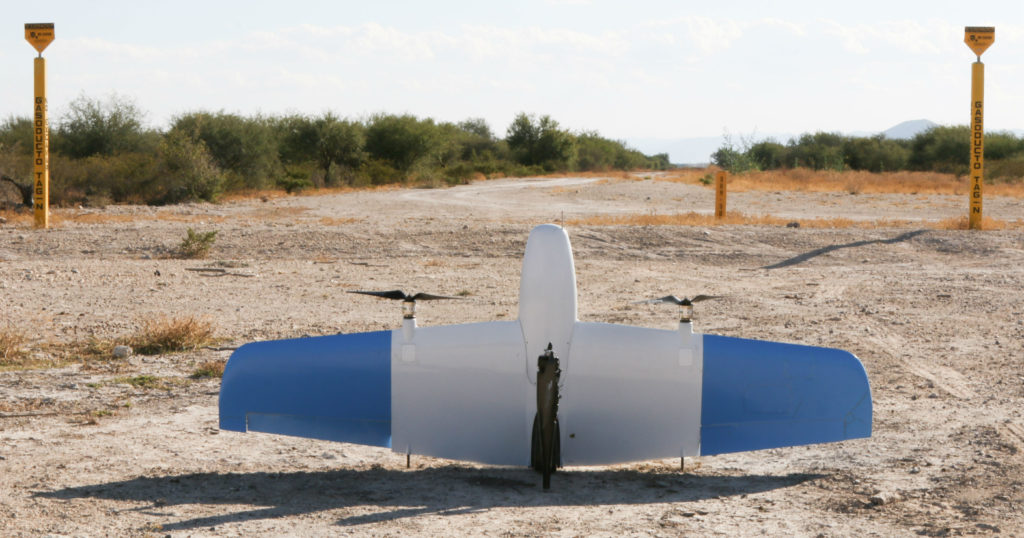Estimated reading time 6 minutes, 11 seconds.
As a small, autonomous drone flew over a more-than 100-kilometre stretch of gas pipeline in rural Mexico in late November, engineers from SkyX Systems Corporation monitored the flight intently from their facility in Markham, Ont.

SkyX is the company behind the SkyOne unmanned aircraft system (UAS), an electric drone that used high-resolution photos to identify more than 200 potentially significant anomalies in the remote pipeline in mountainous terrain near the city of San Luis Potosi.
“I would say it’s almost groundbreaking–a breakthrough for the company, and I think also for the drone industry,” said Didi Horn, founder and CEO of SkyX.
“The people on the ground in Mexico [were] kind of seeing everything, and there for the backup. But the whole operation took off from 3,000 kilometres away.”
SkyOne’s 102-kilometre flight is believed to be one of the longest ever by a small robotic UAS, and the company saw it as a validation of technology that is attracting interest from customers all over the world.
“This 100-plus kilometre [mission] basically proved the concept,” said Horn. “So, we can do it tomorrow morning. If we get the approval of the company or the customer, we can track 3,000 kilometres in the same way we tracked the 100.”
SkyOne is a vertical takeoff and landing (VTOL) system, meaning it takes off vertically but transitions into forward, fixed-wing flight.

While some UAS are remote-controlled and require full-time operators, SkyOne is billed as a “flying robot,” flying autonomously while it silently exchanges data with a ground station, with no need for a pilot operating with a transmitter.
SkyOne is designed to fly long distances and recharge its battery in containers placed in valve stations along the length of a pipeline.
Though focused initially on the oil and gas sector, the company sees it as a viable tool to monitor rail lines, coastlines, electrical grids, and more.
SkyX has been in touch with a fire department in Ontario that suggested it could also be used as a first responder, said Horn.
“We can send the drone … and by that, send kind of an alert to the teams on their way, knowing what [is] the source of the flame.”

He cited forestry operations in Canada as another potential market.
“All of those applications are on the radar of SkyX, not because we’re targeting a lot of markets–but because we can handle any of those applications,” he said.
Horn would not provide specific names, but said companies from Argentina, Brazil, Mexico and Spain have all provided letters of intent that show their interest in SkyOne.
“They were amazed how on the one hand the solution is simple, yet on the other it provided everything they need and more,” he said.
SkyX is just two years old and has 23 employees at facilities in Markham and Calgary, Alta., as well as a couple of contractors, said Horn.
The company saw its 102-km flight in Mexico as a milestone for several reasons, including that it gathered data in little more than an hour that it says would have taken a person well over a week.
Also, the mission identified more than 200 geo-referenced anomalies the customer was unaware of, pinpointing precise coordinates for rapid investigation, according to SkyX.

“We’re about far more than just putting one drone on a single pipeline,” said Horn. “Once we add a charging station, we can basically fly anywhere within a 100-kilometre radius of that station. With more stations, we can obviously stop to recharge–and then keep on going. In theory, we could fly thousands of kilometres without returning to home.”
As the company moves forward, it is focused on trying to acquire new customers, deploy its products, and take its technology to the next level.
“SkyX right now is ahead of the game on many levels,” said Horn. “We plan on maintaining that lead.
“There [are] a lot of other drone companies around, but I think the ability of the SkyX System to provide both short-term and long-range capabilities sets us apart.”








